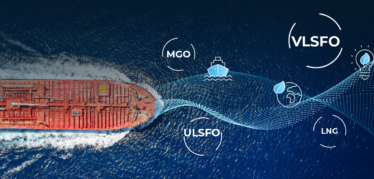As the commercial maritime industry continues to grow in volume and complexity, so do the underlying freight contracts that serve as the unique blueprints for every voyage.
Index-linked contracts are particularly complex, as there are several different structures and components affecting pricing (such as Bunker Adjustment Factors, or BAFs), which change daily as the market fluctuates. Though intricate, index-linked contracts continue to grow in prevalence as an efficient, flexible, and tailored approach, enabling counterparties to cut out constant renegotiations and better account for volatile market conditions as well as the unique circumstances of each contract.
Whether a contract is index-linked or non-index-linked, charterers and traders alike need the ability to view real-time market and bunker data alongside voyage data. Let’s explore some key benefits of integrating market data into voyage fixture and management processes, and how the right digital solution can drive more profitable and accurate decision making.
Streamlined Workflows
As a charterer or trader managing voyages dependent on market rates and data, fixing the most profitable deals can be especially daunting and time consuming. Without a centralized way to view and action on all relevant market and voyage data in one workspace, charterers or traders are forced to manually review, collect, and make calculations on market rates from multiple disparate data sources (such as the Baltic Exchange or Imarex) for every individual contract. This is not only incredibly tedious but introduces a significant risk of error.
Integration not only between systems inside the organization, but also between internal systems and external data sources and indices is crucial to operating more effectively and efficiently. With one integrated workspace as a single source of truth, market and bunker data can be accessed in real time, calculations can be automated, spot prices and forward curves can be referenced and stored in one place, and risk of incomplete, duplicate, or error-ridden data can be significantly reduced.
Streamlining workflows means that charterers and traders can spend less time on monotonous calculations and more time on analysis and decision making.
Unparalleled Accuracy
As any maritime professional knows, accuracy and timeliness are of the utmost importance. This rings especially true when it comes to voyage planning, as the profitability of every voyage rides on the charterer’s ability to understand the complex terms and impact of each contract in the context of a constantly changing market.
As such, it is crucial that charterers assess the latest market data rates when running estimation calculations to understand whether to agree to a contract with a counterparty and if now is a good time to fix business. With instant access to market data, charterers can refer to specified trade routes basis specific dates and understand how net daily TCE and estimate P&L is affected. This visibility empowers charterers to deliver more accurate estimates than ever before.
Market Data Access with the Veson IMOS Platform
Access to real-time market data is relevant for all maritime stakeholders, not just traders. Even for maritime organizations that are not actively managing exposure, having access to market data is becoming a crucial success factor for profitable voyage fixture and management.
With IMOS Market Data Access, users can import freight and bunker prices and forward curves into the Veson IMOS Platform to support the use of index-linked vessel and cargo contracts. Users can also reference market data directly within the Voyage Estimator for more accurate, in-line calculations. Learn more here.



 Giftson Eliyesar
Giftson Eliyesar
 Hongbeom Park
Hongbeom Park
 Oliver Kirkham
Oliver Kirkham